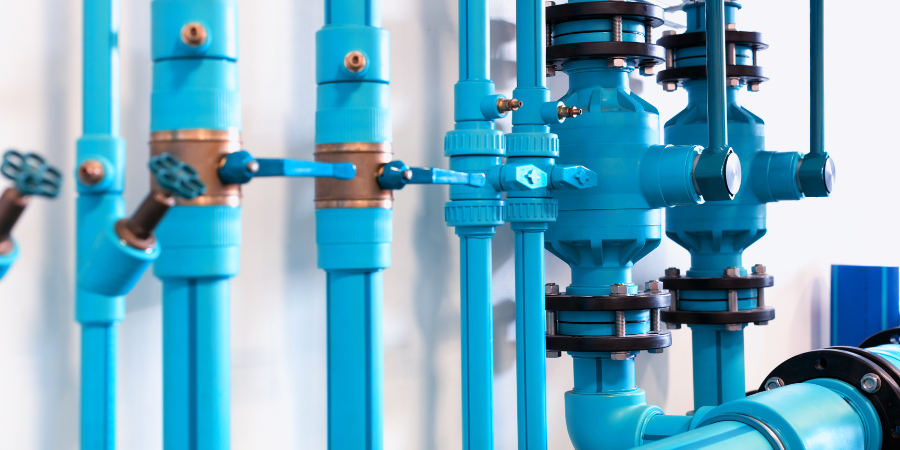Air Admittance Valves (AAVs) go by many names, such as Mini Vents, Cheater Vents, and Mechanical Vents, to name a few. Regardless of what they are called and the type installed, they all perform the same function. AAVs are used to admit air into a plumbing system and prevent sewer gases from entering your living spaces without the need to be connected to the main Drain-Waste-Vent system.
In this article, we will gain an understanding of Drain-Waste-Vent systems and how an AAV can take the place of a traditional vent. We will learn how an AAV works, the requirements that need to be met when installing one, and the typical scenarios that may influence a homeowner or contractor to choose this innovative type of plumbing vent.
Understanding The Drain-Waste-Vent System
All plumbing systems have a Drain-Waste-Vent System (DWVS), which is comprised of drainpipes to remove solid and liquid waste from your home and vent pipes to allow sewer gases to exit living spaces and vent to the outdoors. The vents have the added job of maintaining an equalized pressure inside plumbing systems.
Pressures Explained
The DWVS uses gravity to pull waste down a properly sloped drain pipe into the public sewer or private septic system. As the waste flows, it compresses the air in front of the wastewater, creating positive pressure. To balance this pressure and allow the waste to flow out properly, air must be let into the system behind the wastewater. This air comes in through the roof vent.
If a vent is omitted or becomes blocked by dirt and debris or animal nests, air cannot enter, and the traps installed at every plumbing fixture meant to maintain a liquid barrier to keep sewer gases at bay will be siphoned empty. This is known as a dry trap, and a dry trap will create a smelly situation.
If the pressure in the drain pipe becomes significantly higher, it will create a high positive pressure causing a chance the wastewater will reverse directions and back up into the fixtures creating unsanitary conditions and potential health hazards.
Balanced pressures must be maintained at all times to allow drain pipes to flow properly without wastewater backups, dry traps, or sewer gases invading living spaces.
What Is An Air Admittance Valve?
AAVs are mechanical devices that can be used to replace part of a traditional roof venting system. All plumbing systems require at least one vent exiting the home through the roof. This vent allows air to enter the plumbing system while simultaneously emitting sewer gases to the outdoors.
Connecting all plumbing fixtures to this central roof vent can be cumbersome and costly, and here is where an AAV can come in handy. These valves allow individual vents to be installed at fixtures enabling efficient venting without adding multiple and unsightly roof vents.
How Does An Air Admittance Valve Work?
AAVs are typically installed between the trap of a plumbing fixture and the drain line and are activated by pressure. When there is zero pressure (meaning no water is running through the drainpipe), the vent is sealed and waiting to react to pressure changes. In this position, no air enters the AAV, and no sewer gases escape.
A change in pressure from wastewater exiting the fixture will alert the valve to open, and air from the room will flow through a protective screen, past the seal, and into the DWV system. This air will balance the positive pressure being created by the wastewater flowing and equalize pressure so drains empty properly.
Requirements For Installation
AAVs are mechanical systems which means they can fail. Installation demands these vents be placed in areas with easy access in case they need repair.
AAVs are required to be a minimum of 4 inches above the waste line. This means 4 inches from the top of the drain in a sink, tub, or shower, for example, to where the AAV attaches. When installed in an attic space, the AAV must sit at least 6 inches above the attic insulation and within 15 inches of vertical.
When To Use An Air Admittance Valve
There are many circumstances where an AAV would be preferred over a traditional venting system. Here we will look at the most common reasons they are used.
Free-Standing Fixtures
Because traditional venting systems typically run up through the walls of a building and out through the roof, AAVs are useful for free-standing plumbing fixtures with no access to the walls, such as kitchen island sinks and remotely located bathrooms.
Poorly Located Fixtures
When conditions prevent a plumber from connecting to an already established venting system, an AAV may be advisable. Sometimes there are structural obstacles, and other times connecting would require too much work. Additionally, when an addition is constructed, the plumbing fixtures may be too far from the main stack to be tied in properly.
Aesthetic Reasons
Although at least one roof vent is required, sometimes the p[plumbing system is designed, so additional vents are needed. Many homeowners find these pipes protruding out of their roof visibly unappealing, and they would rather opt for an AAV than add more roof vents.
Reduce Costs
Tying plumbing fixtures from all areas of a home takes time and money. Installing individual AAVs reduces installation costs substantially but be warned. AAVs are not always permitted, so check local codes to see if your area allows them.
Looking To Install An Air Admittance Valve?
Air Admittance Valves are a cleverly designed replacement choice for bypassing plumbing venting obstacles. We recommend these valves to our customers because they work well, are less costly to install, and make vetting out-of-the-way plumbing fixtures a breeze.
Call us to learn more about how an Air Admittance Valve can be used to keep your plumbing fixtures and pipes flowing freely and your home clean and comfortable!
Need an emergency plumber in Orange County? Contact us today!






